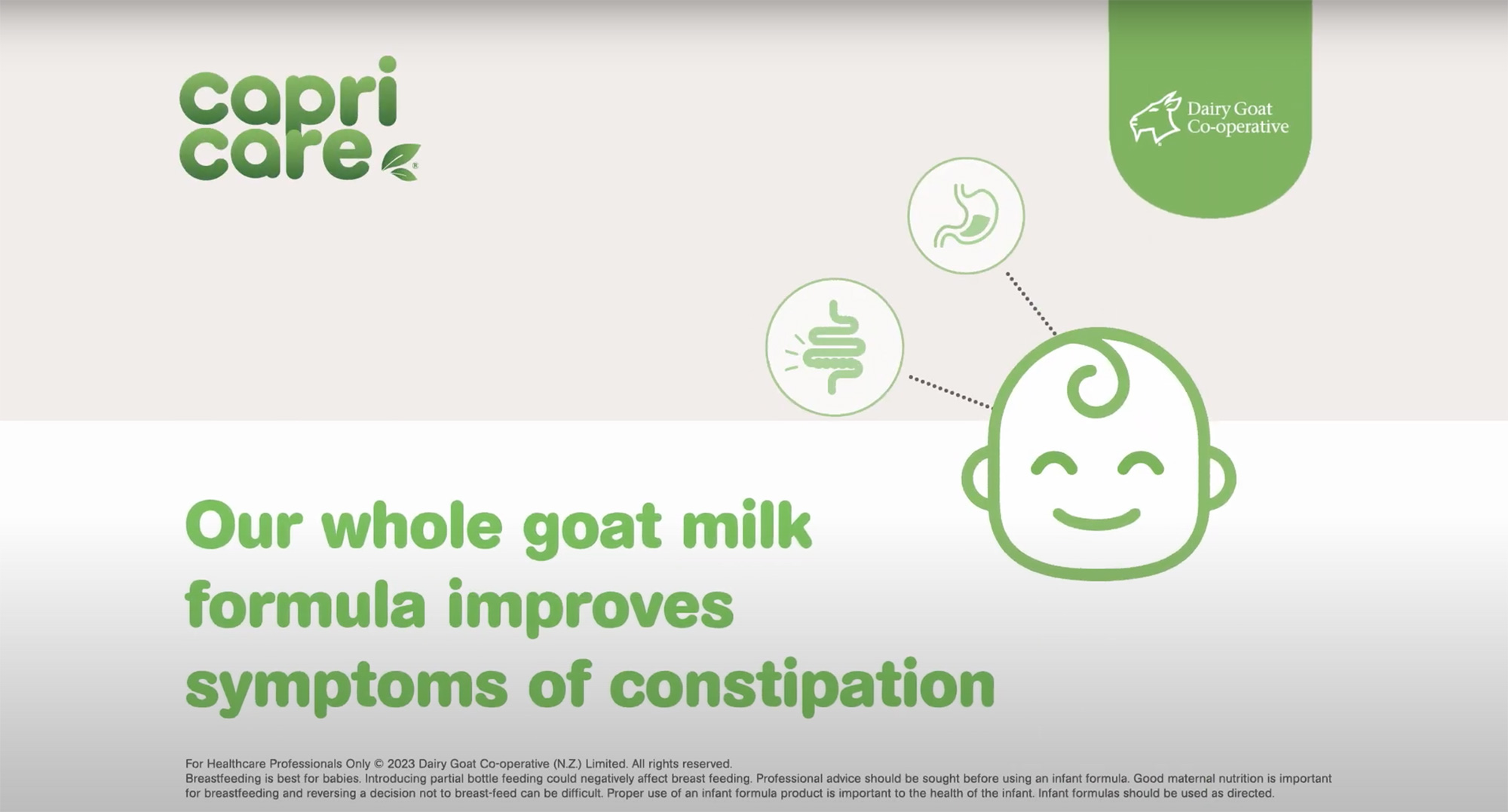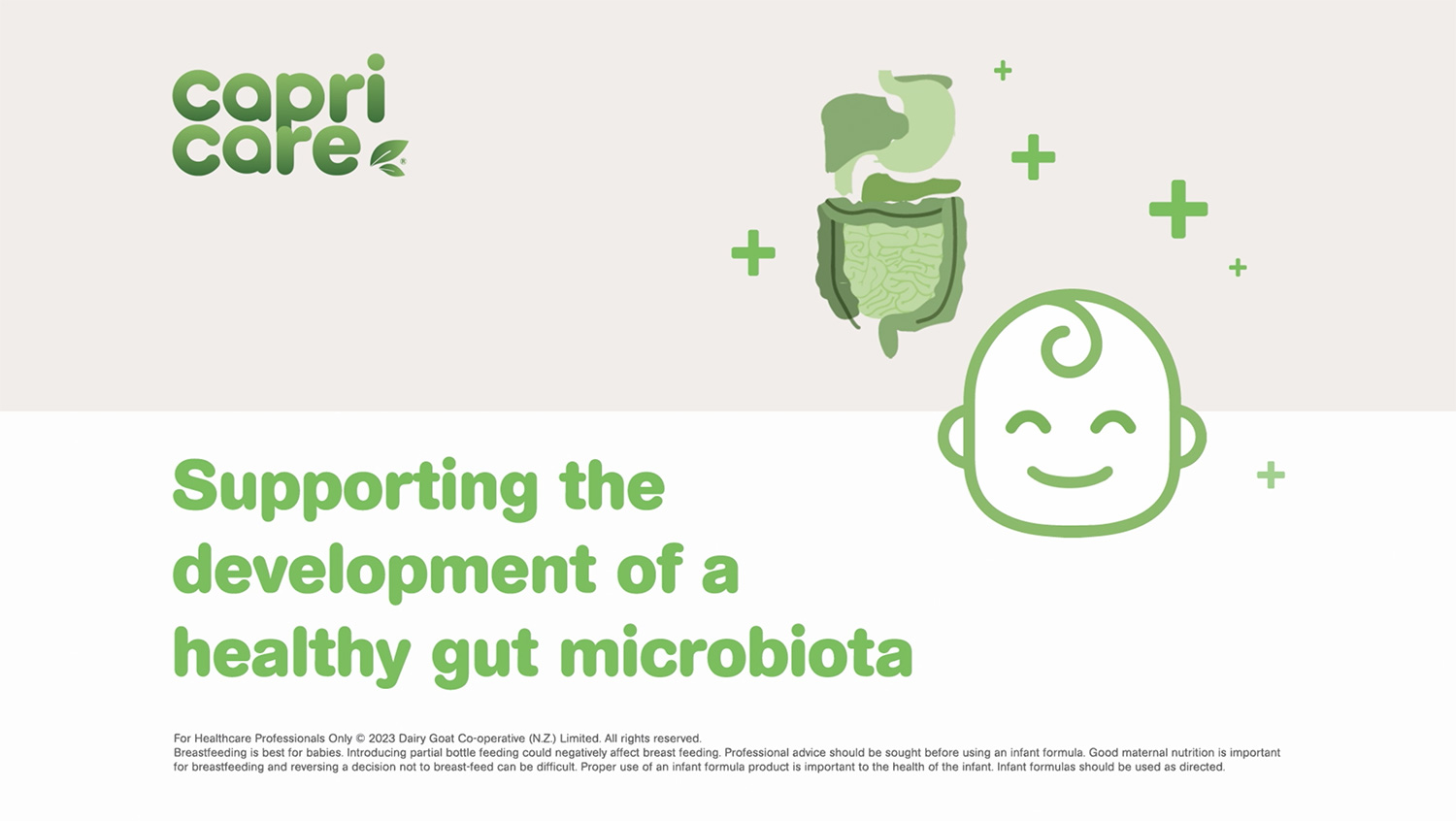Our Science
Take an inside look at the science and what makes our product range unique

Easy to Digest
More Capricare® casein proteins are digested under simulated gastric conditions compared to cow milk.
Capricare® forms a softer curd.
References
Hodgkinson, A. J., Wallace, O. A., Boggs, I., Broadhurst, M., & Prosser, C. G. (2018). Gastric digestion of cow and goat milk: Impact of infant and young child in vitro digestion conditions. Food Chemistry, 245, 275-281. Read Publication
Hodgkinson, A. J., Wallace, O. A., Smolenski, G., & Prosser, C. G. (2019). Gastric digestion of cow and goat milk: Peptides derived from simulated conditions of infant digestion. Food Chemistry, 276, 619-625. Read Publication
Wang, Y., Eastwood, B., Yang, Z., de Campo, L., Knott, R., Prosser, C., Carpenter, E., Hemar, Y. (2019). Rheological and structural characterization of acidified skim milks and infant formulae made from cow and goat milk. Food hydrocolloids, 96, 161-170. Read Publication
Ye, A., Cui, J., Carpenter, E., Prosser, C., & Singh, H. (2019). Dynamic in vitro gastric digestion of infant formulae made with goat milk and cow milk: Influence of protein composition. International Dairy Journal, 97, 76-85. Read Publication
Supports Gut Health
Capricare® naturally contains more prebiotic oligosaccharides than infant formulas based off cow’s milk. Capricare® has also been shown to have bifidogenic effect.
Infants had stool characteristics closer to breastfed infants.
References
Han, Y., Chang, E. Y., Kim, J., Ahn, K., Kim, H. Y., Hwang, E. M., Lowry, D., Prosser, C., Lee, S. I. (2011). Association of infant feeding practices in the general population with infant growth and stool characteristics. Nutr Res Pract, 5(4), 308-312. Read Publication
Tannock, G. W., Lawley, B., Munro, K., Gowri Pathmanathan, S., Zhou, S. J., Makrides, M., Gibson, R. A., Sullivan, T, Prosser, C. G., Lowry, D., Hodgkinson, A. J. (2013). Comparison of the compositions of the stool microbiotas of infants fed goat milk formula, cow milk-based formula, or breast milk. Appl Environ Microbiol, 79(9), 3040-3048. Read Publication
Zhou, S. J., Sullivan, T., Gibson, R. A., Lönnerdal, B., Prosser, C. G., Lowry, D. J., & Makrides, M. (2014). Nutritional adequacy of goat milk infant formulas for term infants: a double-blind randomised controlled trial. British Journal of Nutrition, 111(09), 1641-1651. Read Publication
Reduced Eczema
Fewer infants fed goat milk formula developed eczema during a 12 month double blind randomised control trial.
Incidence of non trivial
Eczema (SCORAD >10)
More information
Infants experienced less severe eczema compared to infants fed cow milk formula.
The data suggests infants who are fed goat milk formula may experience fewer and less severe incidences of eczema compared to infants fed cow milk formula. However, these findings require confirmation in further studies.
References
Carpenter, E., & Prosser, C. (2017). Prevalence and cumulative incidence of eczema in infants fed goat or cow milk based formula. Journal of Pediatric Gastroenterology and Nutrition, 64(S1), 977. Read Publication
Zhou, S. J., Sullivan, T., Gibson, R. A., Lönnerdal, B., Prosser, C. G., Lowry, D. J., & Makrides, M. (2014). Nutritional adequacy of goat milk infant formulas for term infants: a double-blind randomised controlled trial. British Journal of Nutrition, 111(09), 1641-1651. Read Publication
Safe and Nutritionally Complete
Weight girls
Weight boys
Capricare® supports healthy growth of infants. This has been confirmed through multiple clinical trials in which weight, length, head circumference, fat mass, and weight-for-length, of infants fed goat milk based infant formula were within normal ranges.
More information
All nutritional biochemical markers
were within the reference range.
* Blood samples collected at four months of age
**Diagnostic criteria of South Australia Pathology, Adelaide, Australia
Capricare provides infants with all essential amino acids without the need for additional whey.
Infants had significantly lower blood urea levels compared to infants fed cow milk formula.
High urea levels are associated with an imbalance of amino acids at a time when the infants’ kidneys are still relatively immature to withstand the stress of excess protein.
References
Grant, C., Rotherham, B., Sharpe, S., Scragg, R., Thompson, J., Andrews, J., Wall, C., Murphy, J., Lowry, D. (2005). Randomized, double-blind comparison of growth in infants receiving goat milk formula versus cow milk infant formula. J Paediatr Child Health, 41(11), 564-568. Read Publication
Han, Y., Chang, E. Y., Kim, J., Ahn, K., Kim, H. Y., Hwang, E. M., Lowry, D., Prosser, C., Lee, S. I. (2011). Association of infant feeding practices in the general population with infant growth and stool characteristics. Nutr Res Pract, 5(4), 308-312. Read Publication
Rutherfurd, S. M., Darragh, A. J., Hendriks, W. H., Prosser, C. G., & Lowry, D. (2006). True Ileal Amino Acid Digestibility of Goat and Cow Milk Infant Formulas.
J Dairy Sci, 89(7), 2408-2413. Read Publication
Zhou, S. J., Sullivan, T., Gibson, R. A., Lönnerdal, B., Prosser, C. G., Lowry, D. J., & Makrides, M. (2014). Nutritional adequacy of goat milk infant formulas for term infants: a double-blind randomised controlled trial. British Journal of Nutrition, 111(09), 1641-1651. Read Publication


